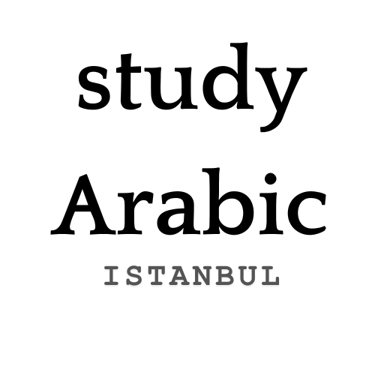How Learning Arabic is Like Solving a Puzzle
The most rewarding aspect of learning Arabic is the moment of realization—that specific moment when the pieces fall into place.
1/7/20255 min read


Learning Arabic is an intellectual adventure, a journey where the learner unlocks beauty and meaning, piece by piece. It’s not just about memorizing vocabulary or conjugating verbs—it’s about deciphering intricate structures, discovering hidden connections, and solving puzzles that reveal profound truths. From studying Fusha (classical Arabic) to immersing oneself in medieval poetry, Quran, and Hadith, learning Arabic combines the analytical precision of a puzzle-solver with the awe of uncovering poetic brilliance. Here’s how this beautiful process unfolds.
The Intricate Puzzle of Arabic Grammar
Arabic grammar is renowned for being both compact and efficient, yet extraordinarily elaborate. A simple four-word sentence in Arabic might require eight words or more to express fully in English. This is because Arabic often conveys layers of meaning through its grammar, compacting nuances into a concise and elegant structure. For example:
- The addition of a single prefix or suffix can drastically change the function of a word in a sentence.
- The placement of a diacritical mark—a single vowel symbol—can alter the entire meaning of a phrase.
This level of precision transforms Arabic into a linguistic puzzle, where every word and mark matters. Solving these puzzles requires analytical thinking, attention to detail, and an appreciation for the language’s logic. It’s like adjusting a single piece in a jigsaw puzzle—when it clicks into place, the whole picture becomes clear.
The Beauty of Compact Efficiency
Arabic’s compact nature is one of its most striking features. A single word in Arabic can encapsulate what might take a phrase or even a sentence to express in English. For example:
- The Arabic word "رحمة" (*Rahma*) means mercy, but it also conveys kindness, compassion, and divine care—all in just one term.
- Similarly, verb conjugations in Arabic encode subject, tense, and aspect in one compact form, eliminating the need for auxiliary words.
This efficiency turns every sentence into a rich tapestry of meaning. For learners, deciphering these structures feels like uncovering hidden treasures—each discovery adds depth and clarity to their understanding of the language.
The Role of Diacritical Marks: Precision in Every Detail
One of the most fascinating aspects of Arabic is how a single diacritical mark—known as harakat—can completely change the meaning of a sentence. For instance:
- The word كتب (*Kataba*) can mean “he wrote” when the vowel is a, but Kutiba with a u vowel means “it was written.”
- In the Quran, slight differences in diacritical marks often carry profound theological and poetic implications.
This need for precision adds an element of challenge to learning Arabic, akin to solving a puzzle where every piece must fit perfectly. The reward? A profound realization of the depth and beauty embedded in the language. When a learner deciphers a passage correctly, they are often struck by the thought: “Oh my God, this meaning is breathtaking!”
Unlocking Poetic and Spiritual Treasures
Arabic is not just a language of logic; it is also the language of poetry and revelation. The puzzles that learners solve are not dry, mechanical tasks—they are keys to unlocking some of the most beautiful verses ever composed. Whether studying medieval Arabic poetry, Quranic verses, or Hadith, learners are rewarded with profound insights into human experience and divine wisdom.
Medieval Poetry: The Art of Eloquence
Arabic poetry, particularly from the medieval period, is an intricate interplay of rhyme, rhythm, and layered meanings. Poems often use:
- Metaphors and imagery that demand careful interpretation.
- Root-based wordplay that connects seemingly unrelated concepts.
Deciphering these verses feels like solving an artistic riddle, where every word and phrase contributes to a harmonious whole.
The Quran: Layers of Meaning
The Quran is the ultimate example of Arabic’s linguistic brilliance. Its compact grammar, precise word choice, and rhythmic cadence combine to create a text that is both profound and beautiful. For example:
- A single verse may convey multiple layers of meaning depending on context and interpretation.
- The linguistic symmetry and word order often reflect the themes of the verses, adding another layer of complexity.
Learning to understand the Quran in its original Arabic is like piecing together a divine puzzle—each revelation deepens the learner’s awe and connection to the text.
Hadith: Precision in Faith
In Hadith literature, the precision of Arabic grammar is vital to preserving the integrity of the Prophet Muhammad’s (peace be upon him) words. A small grammatical change can shift the meaning of a Hadith, altering its implications for Islamic law and theology. This makes studying Hadith both a scholarly challenge and a spiritual pursuit.
The Analytical and Poetic Approach
Learning Arabic combines two distinct mental approaches: the analytical and the poetic.
1. Analytical Thinking:
Decoding Arabic grammar and syntax requires logic and precision. Learners analyze patterns, identify root meanings, and apply grammatical rules to construct meaning. This approach appeals to those who enjoy the problem-solving aspect of language learning.
2. Poetic Sensitivity:
At the same time, Arabic rewards learners who appreciate its beauty and artistry. Understanding the rhythm of a verse, the imagery in a poem, or the spiritual resonance of a Quranic passage engages the creative and emotional faculties.
The interplay between these approaches makes learning Arabic a deeply satisfying experience. It is not just about solving puzzles—it is about uncovering beauty and meaning in the process.
Cognitive Benefits of Solving Linguistic Puzzles
Studying Arabic’s complex structures and solving its linguistic puzzles can also enhance cognitive abilities. Research shows that learning a second language rewires the brain, improving skills like:
- Problem-solving: Deciphering Arabic grammar trains the brain to think critically and systematically.
- Memory: Memorizing vocabulary, root systems, and grammatical rules strengthens both short-term and long-term memory.
- Creativity: Understanding poetic and rhetorical structures fosters creative thinking.
These cognitive benefits extend beyond language learning, equipping learners with the mental tools to tackle challenges in other areas of life.
The Reward: Beauty in Understanding
The most rewarding aspect of learning Arabic is the moment of realization—the moment when the pieces fall into place. After analyzing a sentence, adjusting a diacritical mark, or applying the correct grammatical rule, the learner is rewarded not just with understanding, but with awe. The meaning they unlock is often profound, poetic, and beautiful.
For instance:
- A Quranic verse may reveal a divine attribute or a profound moral lesson.
- A line of poetry may capture the essence of love, loss, or longing in a way that resonates deeply.
- A Hadith may provide clarity on spiritual practices or human behaviour.
These moments of discovery make the effort of learning Arabic worthwhile, turning the process into a deeply enriching journey.
Conclusion
Learning Arabic is like solving a puzzle—a puzzle that combines logic, creativity, and beauty. It challenges the mind to think critically and precisely, while also engaging the heart with its poetic and spiritual depth. From the compact efficiency of its grammar to the profound meanings it conveys, Arabic offers learners the opportunity to unlock treasures that are both intellectual and emotional.
For those who enjoy solving puzzles, uncovering patterns, and discovering beauty, Arabic is a language that rewards every effort. Each piece of the puzzle brings learners closer to understanding a rich cultural heritage, a profound literary tradition, and the Divine wisdom encapsulated in the Quran and Hadith. It is a journey of discovery, one that inspires both the mind and the soul.
